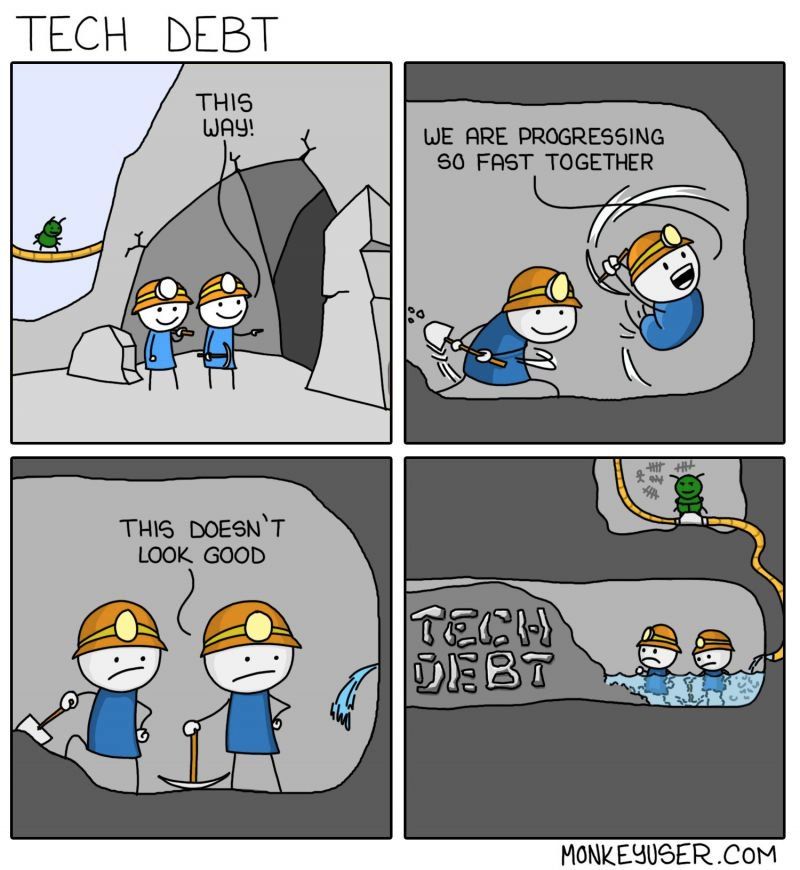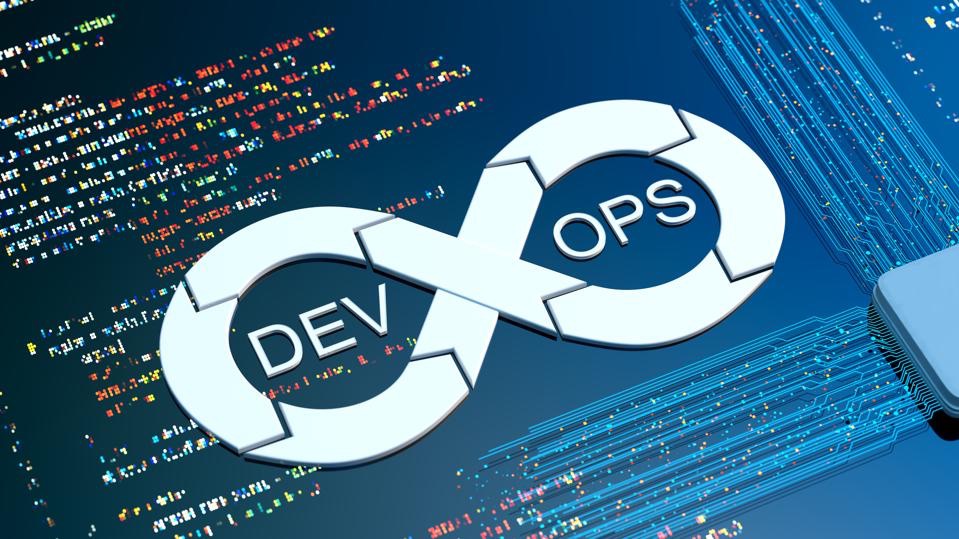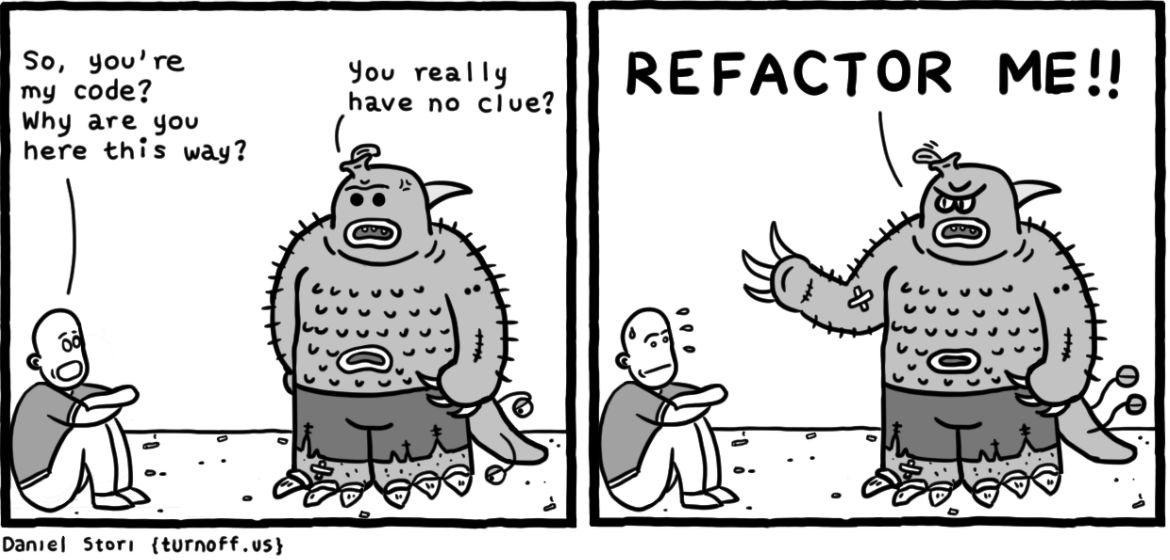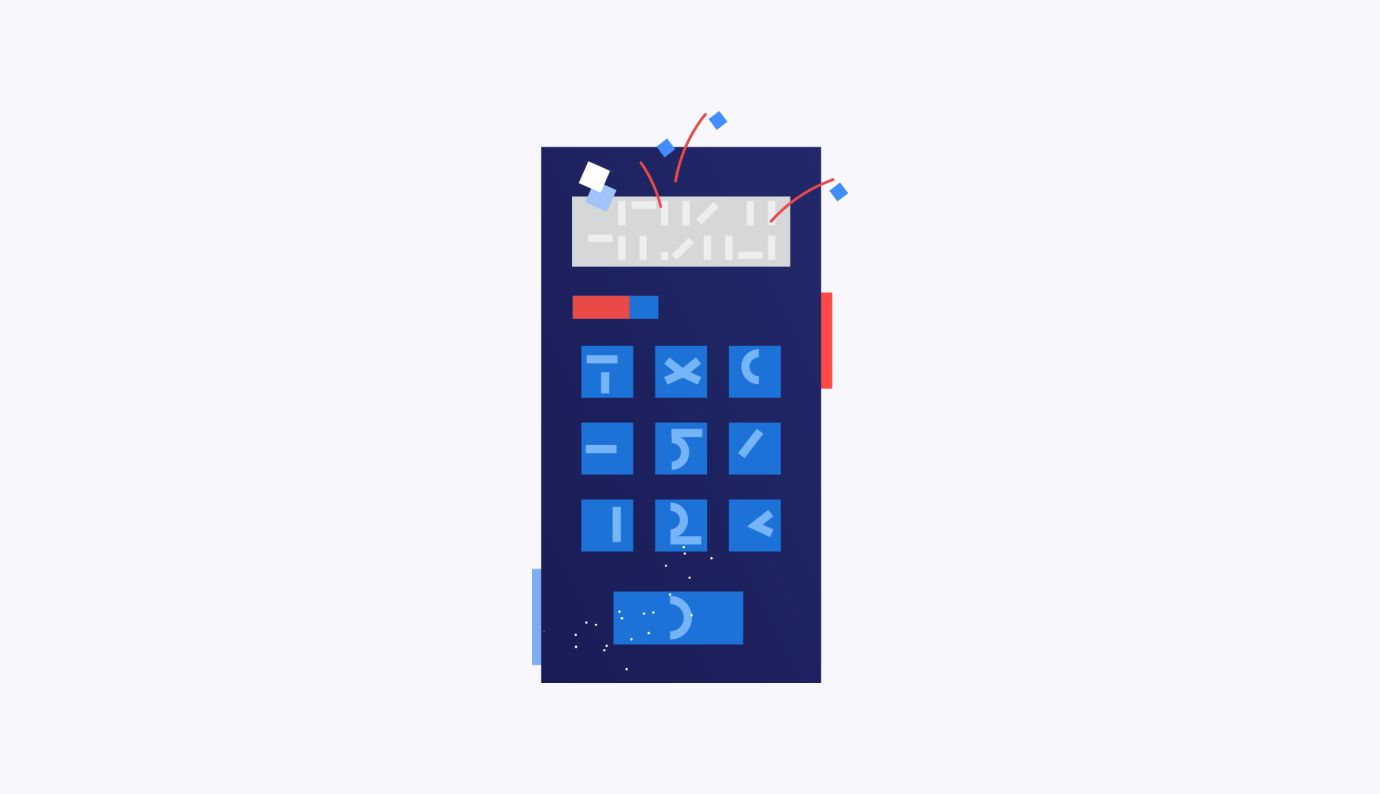
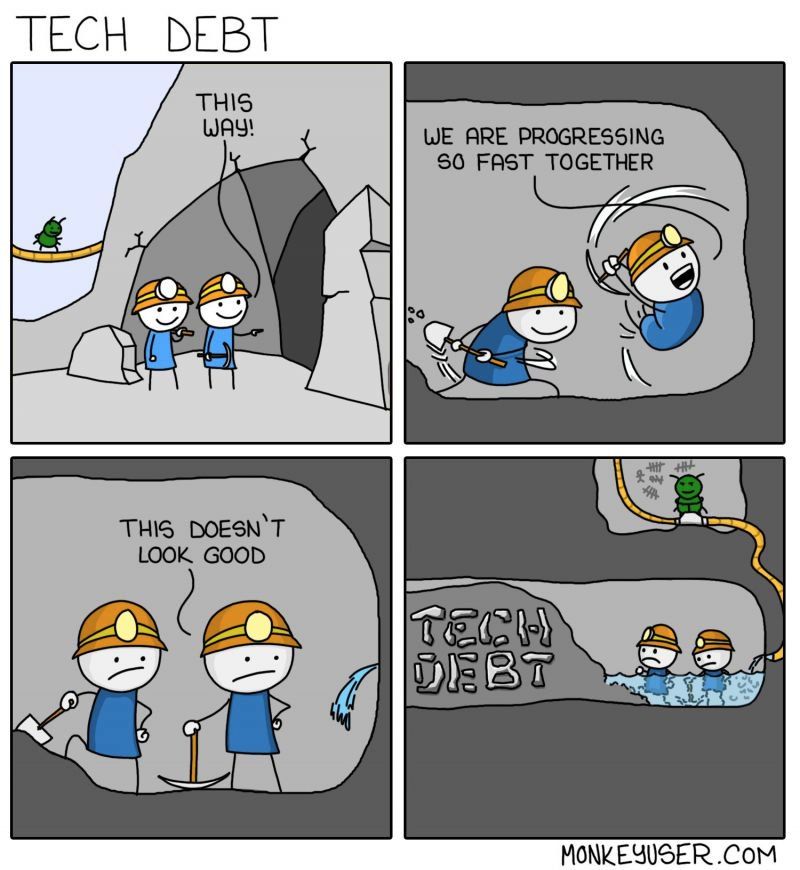 How does tech debt cost you? Here are 6 reasons why managing technical debt should be part of your business plan.
How does tech debt cost you? Here are 6 reasons why managing technical debt should be part of your business plan.
 In this software engineering survey, we learn about the state of technical debt and technical hiring.
In this software engineering survey, we learn about the state of technical debt and technical hiring.

 You can't today browser any well-known tech news website or open YouTube without seeing Low Code Article or Ad.
You can't today browser any well-known tech news website or open YouTube without seeing Low Code Article or Ad.
 Without organization, backlogs get messy quickly, and issues can’t be prioritized.
Without organization, backlogs get messy quickly, and issues can’t be prioritized.
 Many engineering teams get stuck and cannot ship quality software fast because of technical debt. The best engineering teams I've talked to use the right tools.
Many engineering teams get stuck and cannot ship quality software fast because of technical debt. The best engineering teams I've talked to use the right tools.
 Just like quality assurance is done in manufacturing, testing code quality is also done in software development. While developing software or if you're inspecting code written by your team, you need to make sure you verify its quality at every level of development before it gets more complex. In the world of software, the phrase code quality can be interpreted in different ways by different industries and teams.
Just like quality assurance is done in manufacturing, testing code quality is also done in software development. While developing software or if you're inspecting code written by your team, you need to make sure you verify its quality at every level of development before it gets more complex. In the world of software, the phrase code quality can be interpreted in different ways by different industries and teams.
 As a developer, you’re always looking for cutting-edge tools, tricks, and extensions. Here are 7 tools that'll improve your productivity and efficiency.
As a developer, you’re always looking for cutting-edge tools, tricks, and extensions. Here are 7 tools that'll improve your productivity and efficiency.
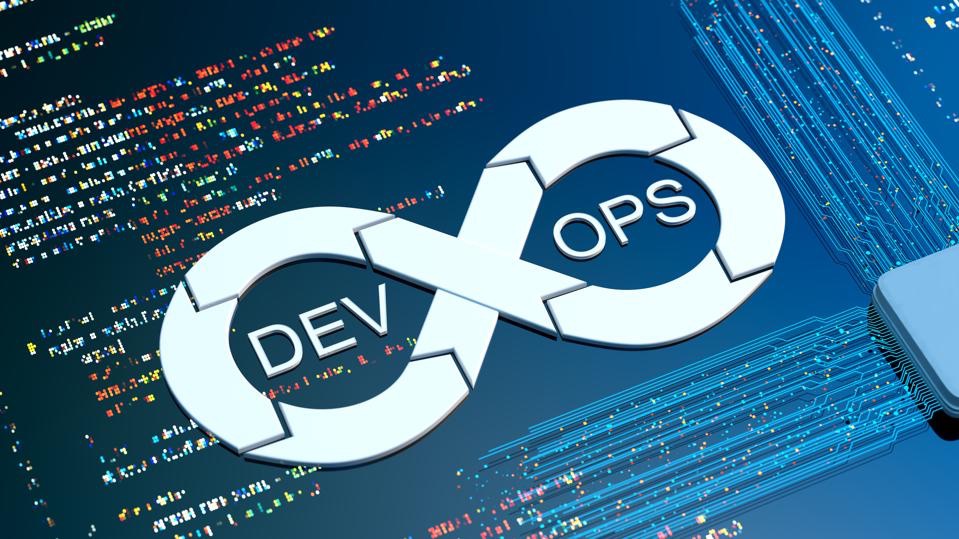 Let’s see how organizations should entwine some essential practices into various phases of the DevOps lifecycle to address the technical debt challenges.
Let’s see how organizations should entwine some essential practices into various phases of the DevOps lifecycle to address the technical debt challenges.
 What happens if your development team is hit by a bus? A short explanation of the Bus Factor and how to hold its score at safe levels and why you should.
What happens if your development team is hit by a bus? A short explanation of the Bus Factor and how to hold its score at safe levels and why you should.
 Release early, release often — just don’t forget to refactor ;)
Release early, release often — just don’t forget to refactor ;)
 The reality is, tech moves fast, and it's easy to get distracted by the latest software, tool, or trend.
The reality is, tech moves fast, and it's easy to get distracted by the latest software, tool, or trend.
 Learn how to manage technical debt in your codebase with this guide on the 4 types of tech debt, with examples. We'll look at how to fix each type of tech debt.
Learn how to manage technical debt in your codebase with this guide on the 4 types of tech debt, with examples. We'll look at how to fix each type of tech debt.
 Every company needs to make sure its apps can keep up with the modern-day technological requirements and market expectations through application modernization.
Every company needs to make sure its apps can keep up with the modern-day technological requirements and market expectations through application modernization.
 The barbell strategy is a valuable approach for companies looking to balance the need for innovation and stability in their software systems.
The barbell strategy is a valuable approach for companies looking to balance the need for innovation and stability in their software systems.
 I see many Engineering teams under huge pressure to build fast and often lacking time to fix and clean up their codebase.
I see many Engineering teams under huge pressure to build fast and often lacking time to fix and clean up their codebase.
 Delivery speed results in cost reduction; confidence enables speed; confidence requires quality.
Delivery speed results in cost reduction; confidence enables speed; confidence requires quality.
 "Tyranny without the tyrant" - Hannah Arendt
"Tyranny without the tyrant" - Hannah Arendt
 Product managers are able to help in tech debt closing. Is it myth or reality? In the article, we'll discover what it may look like under the hood.
Product managers are able to help in tech debt closing. Is it myth or reality? In the article, we'll discover what it may look like under the hood.
 Recognizing that you have technical debt is easy. And if you don’t recognize it already, one of your engineers will likely tell you:)
Recognizing that you have technical debt is easy. And if you don’t recognize it already, one of your engineers will likely tell you:)
 People assume they know what technical debt is, however, almost no-one understands it.
People assume they know what technical debt is, however, almost no-one understands it.
 Technical debt, approaches to its rapid repayment, and minimization on previous and current projects.
Technical debt, approaches to its rapid repayment, and minimization on previous and current projects.
 Before the pandemic, businesses sought ways to innovate and become more agile, without increasing costs, as an advantage over competitors. But, COVID-19 has made these outcomes a prerequisite for survival in any competitive market.
Before the pandemic, businesses sought ways to innovate and become more agile, without increasing costs, as an advantage over competitors. But, COVID-19 has made these outcomes a prerequisite for survival in any competitive market.
 Technical Debts have been in the center of software engineers debate for quite some time. Not only its analogy to financial terms has been discussed, but also the different contexts and aspects a debt contains.
Technical Debts have been in the center of software engineers debate for quite some time. Not only its analogy to financial terms has been discussed, but also the different contexts and aspects a debt contains.
 PMs are ideally placed to create a workplace culture around preventing and responding to technical debt. Here are 7 actionable strategies to help PMs.
PMs are ideally placed to create a workplace culture around preventing and responding to technical debt. Here are 7 actionable strategies to help PMs.
 The concept is simple: due to a lack of resources, people sometimes do not address a problem correctly when shipping a new feature or fixing a bug. This debt must be repaid (e.g. the problem needs to be addressed correctly) or the debt will accumulate and impact the software development in the future.
The concept is simple: due to a lack of resources, people sometimes do not address a problem correctly when shipping a new feature or fixing a bug. This debt must be repaid (e.g. the problem needs to be addressed correctly) or the debt will accumulate and impact the software development in the future.
 There are many ways in which technical debt costs us money: lost deals, customer churn, employee churn, lawsuits, and more. However, there are a couple of issues that are more important than others: engineering time, morale, and the missed revenue from software delays.
There are many ways in which technical debt costs us money: lost deals, customer churn, employee churn, lawsuits, and more. However, there are a couple of issues that are more important than others: engineering time, morale, and the missed revenue from software delays.
 If you are looking for a tool to start managing technical debt this article will help you make the right decision.
If you are looking for a tool to start managing technical debt this article will help you make the right decision.
 TODOs are a tricky subject for developers. Many codebases are guilty of having TODOs linger around while nobody knows who’s responsible for a TODO or even has the required context to tackle it. Yet, should we feel ashamed for our lingering TODOs?
TODOs are a tricky subject for developers. Many codebases are guilty of having TODOs linger around while nobody knows who’s responsible for a TODO or even has the required context to tackle it. Yet, should we feel ashamed for our lingering TODOs?
 I’m learning the Clojure and ClojureScript craft and I must say, I enjoy it. This article explains what leads me on the track of learning Clojure/Script macro. This is the first part of my journey on this topic.
I’m learning the Clojure and ClojureScript craft and I must say, I enjoy it. This article explains what leads me on the track of learning Clojure/Script macro. This is the first part of my journey on this topic.
 Hard-coded authorization leads to technical debt. Decouple your authorization decisions to be a more effective business.
Hard-coded authorization leads to technical debt. Decouple your authorization decisions to be a more effective business.
 Learn why code quality matters, the most important metrics you need to manage quality, and how to track and manage code quality issues.
Learn why code quality matters, the most important metrics you need to manage quality, and how to track and manage code quality issues.
 With much of the DevOps stack having matured and good practices becoming more mainstream, the need for quality in software has quickly become a central issue
With much of the DevOps stack having matured and good practices becoming more mainstream, the need for quality in software has quickly become a central issue
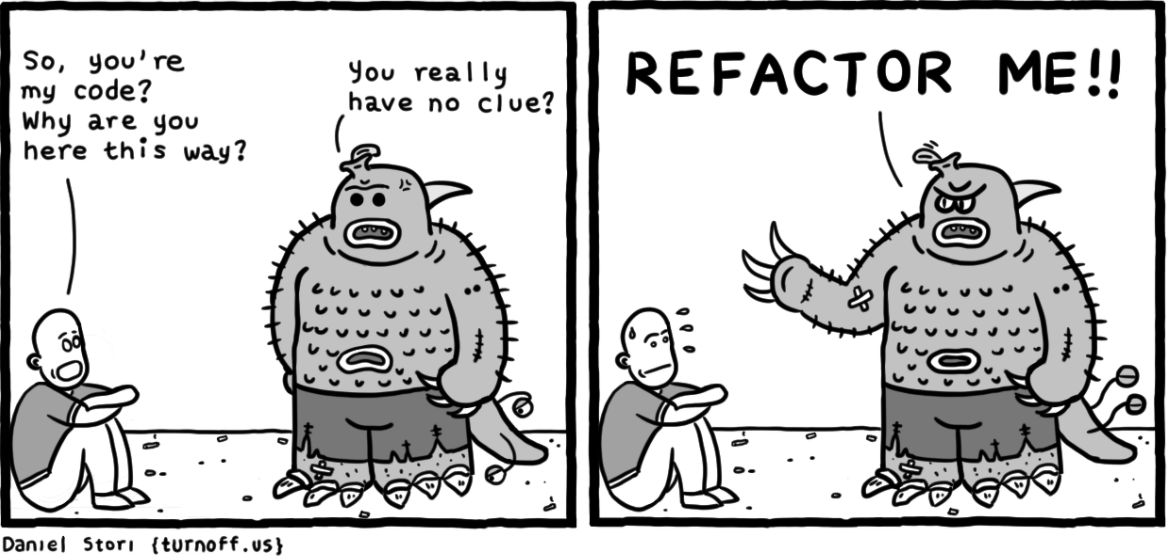 In this guide, you’ll learn all about refactoring source code: the benefits, challenges, tools, and best practices, and what is the difference between refactoring and technical debt.
In this guide, you’ll learn all about refactoring source code: the benefits, challenges, tools, and best practices, and what is the difference between refactoring and technical debt.
 Over the last six months, I’ve learned how the best software engineers and leaders manage technical debt. I've interviewed more than 200 experts, to understand how tech debt is handled at growing software companies.
Over the last six months, I’ve learned how the best software engineers and leaders manage technical debt. I've interviewed more than 200 experts, to understand how tech debt is handled at growing software companies.
 Low-code platforms might be booming, but are they ready to lift the power of AI as well? Read on to find out why low-code might not be a fit for AI.
Low-code platforms might be booming, but are they ready to lift the power of AI as well? Read on to find out why low-code might not be a fit for AI.
 Tech lead, team lead, software architects, and engineering managers — as any developer already knows, naming is hard. Throughout the industry, those roles are as fuzzy as their responsibilities.
Tech lead, team lead, software architects, and engineering managers — as any developer already knows, naming is hard. Throughout the industry, those roles are as fuzzy as their responsibilities.
 Technical debt is a common term in software engineering management. It has been the target of debates for many years. The name comes from a financial analogy because some people defend that developers buy time by shipping faster (and with lower-than-expected quality).
Technical debt is a common term in software engineering management. It has been the target of debates for many years. The name comes from a financial analogy because some people defend that developers buy time by shipping faster (and with lower-than-expected quality).
 While the launch of the IBM i in 1988 seems like a lifetime ago, it is still responsible for powering mission-critical business applications.
While the launch of the IBM i in 1988 seems like a lifetime ago, it is still responsible for powering mission-critical business applications.
 The 3 main types of technical debt are: deliberate, accidental/outdated design, and bit rot.
The 3 main types of technical debt are: deliberate, accidental/outdated design, and bit rot.
 At it's heart, software engineering is a series of feedback loops.
At it's heart, software engineering is a series of feedback loops.
 In this guide, you will learn why it is important to write code comments, what are different code comment types, and the 4 best practices.
In this guide, you will learn why it is important to write code comments, what are different code comment types, and the 4 best practices.
 A lack of focus, lack of visibility into our codebase problems, and context switching decrease developer productivity. Here are the best ways and tools that'll help you get things done.
A lack of focus, lack of visibility into our codebase problems, and context switching decrease developer productivity. Here are the best ways and tools that'll help you get things done.
 My aim is to offer practical strategies to make planning a sprint less painful so that you'll feel organized rather than overwhelmed by your technical debt.
My aim is to offer practical strategies to make planning a sprint less painful so that you'll feel organized rather than overwhelmed by your technical debt.
 It probably comes as no surprise many are facing furloughs and lay-offs. If you are in an affected industry, but work in their IT departments or otherwise support tech for some entity, you may have dodged the first wave. The remote work exodus generated a lot of work.
It probably comes as no surprise many are facing furloughs and lay-offs. If you are in an affected industry, but work in their IT departments or otherwise support tech for some entity, you may have dodged the first wave. The remote work exodus generated a lot of work.
 This week Product School Slack's community members discussed issues regarding technical debt when it comes to prioritization. Check it out!
This week Product School Slack's community members discussed issues regarding technical debt when it comes to prioritization. Check it out!
 In a software company, people often talk about tech debt, usually blaming it for something bad that is happening, such as
In a software company, people often talk about tech debt, usually blaming it for something bad that is happening, such as
 Imagine you are a project manager building a historic fighter plane in a video game. A technical debt story about white stripes on a fighter plane.
Imagine you are a project manager building a historic fighter plane in a video game. A technical debt story about white stripes on a fighter plane.
 Low-code is a means to develop applications with visual, intent-driven development tools reducing the need to create lines of custom code.
Low-code is a means to develop applications with visual, intent-driven development tools reducing the need to create lines of custom code.
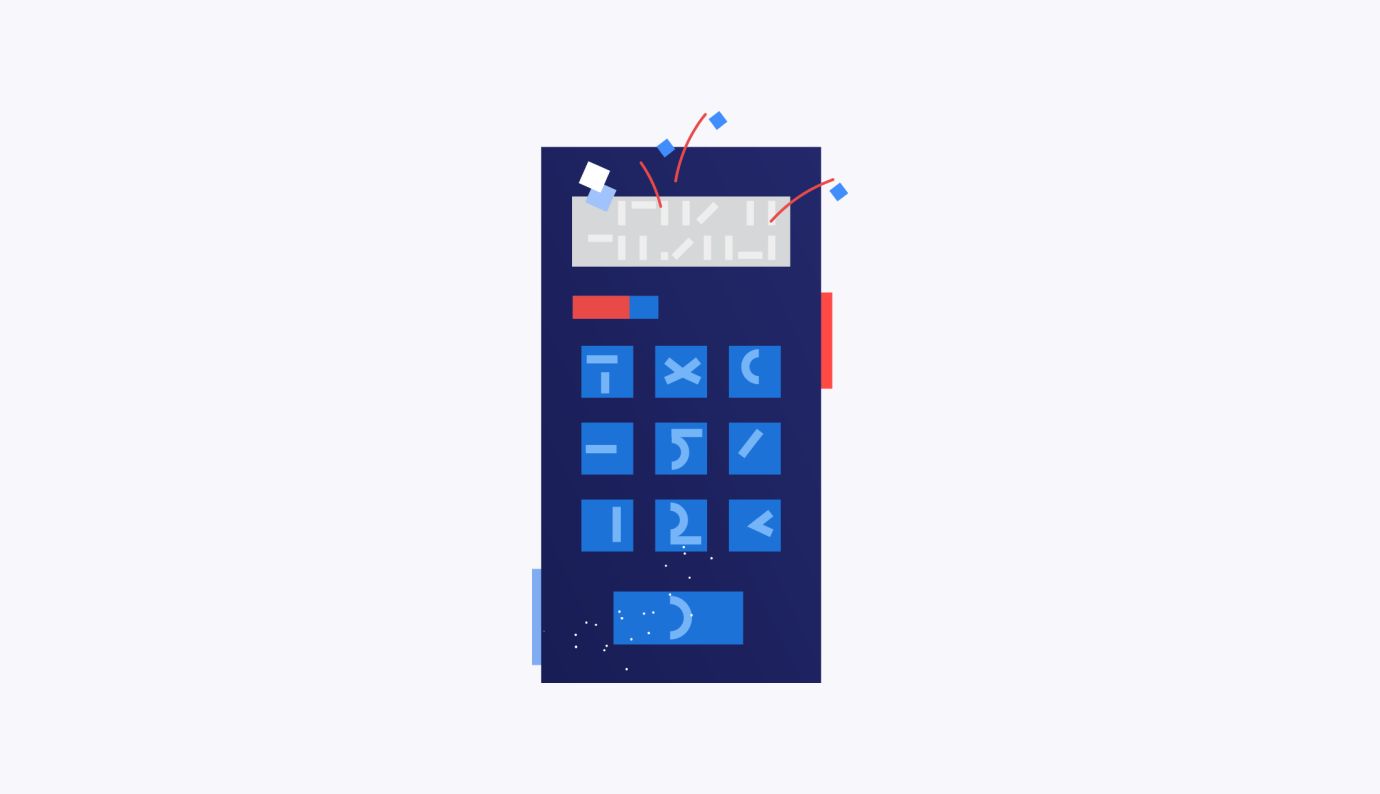 Technical debt metrics help you to monitor deficiencies in your current codebase. We decided to look at how they work, and pick out the best tracking tools.
Technical debt metrics help you to monitor deficiencies in your current codebase. We decided to look at how they work, and pick out the best tracking tools.
 This article looks at how you can refactor your code using Visual Studio Code (VS Code) and Visual Studio Code plugins.
This article looks at how you can refactor your code using Visual Studio Code (VS Code) and Visual Studio Code plugins.
 This article will guide you through the process to craft a technical debt proposal to justify the time spent solving technical issues.
This article will guide you through the process to craft a technical debt proposal to justify the time spent solving technical issues.
 We're used to thinking that you cannot deliver fast and maintain a healthy codebase. But does it really has to be a trade-off?
We're used to thinking that you cannot deliver fast and maintain a healthy codebase. But does it really has to be a trade-off?
 Developers deal with technical debt every day, and they know how to prevent and manage it better than anyone else. Here’s just some of what they had to say.
Developers deal with technical debt every day, and they know how to prevent and manage it better than anyone else. Here’s just some of what they had to say.
 Tackling technical debt is a challenging, yet integral part of every engineer and engineering leader’s role.
Tackling technical debt is a challenging, yet integral part of every engineer and engineering leader’s role.
 I asked a bunch of developers to share some of their horror stories of technical debt.
I asked a bunch of developers to share some of their horror stories of technical debt.
 Code churn is a measure or indication of how often a file changes. It typically refers to how often a developer throws out code
Code churn is a measure or indication of how often a file changes. It typically refers to how often a developer throws out code
 Last week we hosted a webinar where I interviewed Adam Tornhill, CTO & Co-founder of CodeScene, about technical debt: what is it, why is it important, and how to manage it effectively.
Last week we hosted a webinar where I interviewed Adam Tornhill, CTO & Co-founder of CodeScene, about technical debt: what is it, why is it important, and how to manage it effectively.
 What is tech debt? How to manage it effectively? In this Engineer's Complete Guide to Technical Debt, you will learn metrics, statistics, and tools that help engineering teams accelerate the software development process.
What is tech debt? How to manage it effectively? In this Engineer's Complete Guide to Technical Debt, you will learn metrics, statistics, and tools that help engineering teams accelerate the software development process.
 Recently, I had to deal with an old codebase that was difficult to maintain and scale. In this article, I'll share how my team and I decided to deal with maintenance and the best practices we implemented to reduce time spent on refactoring.
Recently, I had to deal with an old codebase that was difficult to maintain and scale. In this article, I'll share how my team and I decided to deal with maintenance and the best practices we implemented to reduce time spent on refactoring.
 Technical debt exists on each project if it’s more than 1–3 months old. Having technical debt doesn’t necessarily mean that software engineers are not performing well. Technical debt can appear because of business pressure, lack of requirements, lack of interaction between team members etc. However, good software engineers know how to manage the technical debt and do that. Bad software engineers simply hide the tech debt from managers and customers, hoping that the project will be completed before it gets out of hand.
Technical debt exists on each project if it’s more than 1–3 months old. Having technical debt doesn’t necessarily mean that software engineers are not performing well. Technical debt can appear because of business pressure, lack of requirements, lack of interaction between team members etc. However, good software engineers know how to manage the technical debt and do that. Bad software engineers simply hide the tech debt from managers and customers, hoping that the project will be completed before it gets out of hand.
 My team at Stepsize has surveyed 200+ Engineers and published the State of Technical Debt 2021 Report that explores the impact of tech debt on companies.
My team at Stepsize has surveyed 200+ Engineers and published the State of Technical Debt 2021 Report that explores the impact of tech debt on companies.
 Originally published at Managing Technical Debt.
Originally published at Managing Technical Debt.
 Originally, the metaphor of technical debt was introduced to help us explain the need for refactoring software systems to upper management.
Originally, the metaphor of technical debt was introduced to help us explain the need for refactoring software systems to upper management.
 Every software company has some amount of technical debt, which is additional development work created in the long-term by taking a shortcut in the short-term to get code out the door. Technical debt can take the form of poor design decisions, much-needed refactorings, technology upgrades, and outstanding bugs.
Every software company has some amount of technical debt, which is additional development work created in the long-term by taking a shortcut in the short-term to get code out the door. Technical debt can take the form of poor design decisions, much-needed refactorings, technology upgrades, and outstanding bugs.
 The writing of Clojure/Script macro may seem as a wizard senior programming craft, but this article will show you that it's not the case. This is the second part of my journey to learn Clojure/Script macro and this article will deal with Clojure macro.
The writing of Clojure/Script macro may seem as a wizard senior programming craft, but this article will show you that it's not the case. This is the second part of my journey to learn Clojure/Script macro and this article will deal with Clojure macro.
